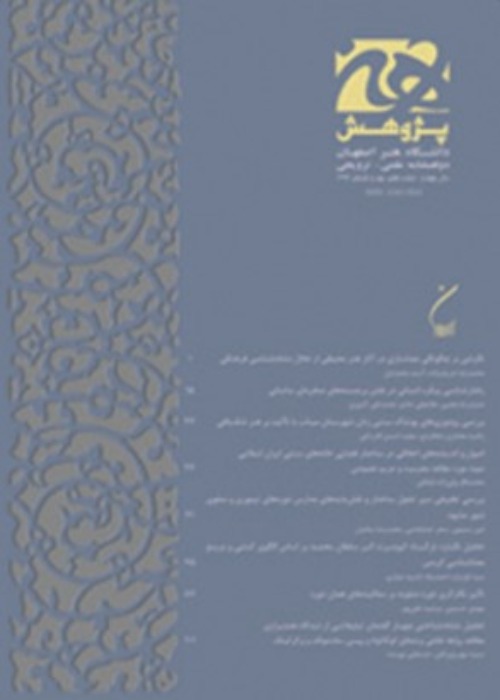The Design and Motif of Textiles in Qajar Furnishings based on Historical Documents
Furnishings, in the general sense of the word rather than its modern usage, had a crucial role in bringing comfort to people during the Qajar period in Iran. Considering the remarkably extensive use of textiles in furnishings, this study aimed to analyze the designs and motifs of textiles used in Qajar furnishings. To this end, first, the use of textiles in Qajar furnishings had to be studied in historical documents. Accordingly, the research question was posed as follows: How could we define different furnishing items used in the living room during the Qajar period and how could we categorize the design and motifs of functional textiles used in their making, finishing, and decoration? The in-depth analytical-historical study of historical documents including travel writings and the textile samples and images such as paintings and photos remaining from the Qajar period indicated that dynamic shapes were used in the majority of furnishings with textiles in this era. Moreover, the items were categorized into three types: soft-surfaced items (rakht-e-khab pich (a kind of mattress and bedclothes covering or bag), cushions, bolsters, pillows, mattresses, quilts, and blankets)., hard-surfaced items (tables, chairs, korsi), and floor covering (rū-farshī (a type of flat-weave used to protect rugs) and sofreh (a cloth on which food is served)). The textiles used in soft-surfaced furnishings, except items without any design or motif, had vagireh (tangled), muharramat (striped), framed, and afshan (scattered). motifs. In hard-surfaced items, medallion (toranj-dar) and vagireh motifs were dominant even though afshan and muharramat were observed in tablecloths. Finally, muharramat and medallion motifs were the most common in rū-farshī and sofreh. In all these items, floral motifs were the most prevalent. However, muharramat and motif-less framed designs were also found and geometric forms were observed in some cases according to the applied technique of embroidery (cheshmeh-duzi). Overall, the results revealed that some of the nine traditional textile designs were not used in the making of Qajar furnishings and some others including afshan, medallion, vagireh, muhrammat, and framed motifs were used to a large extent.
- حق عضویت دریافتی صرف حمایت از نشریات عضو و نگهداری، تکمیل و توسعه مگیران میشود.
- پرداخت حق اشتراک و دانلود مقالات اجازه بازنشر آن در سایر رسانههای چاپی و دیجیتال را به کاربر نمیدهد.




